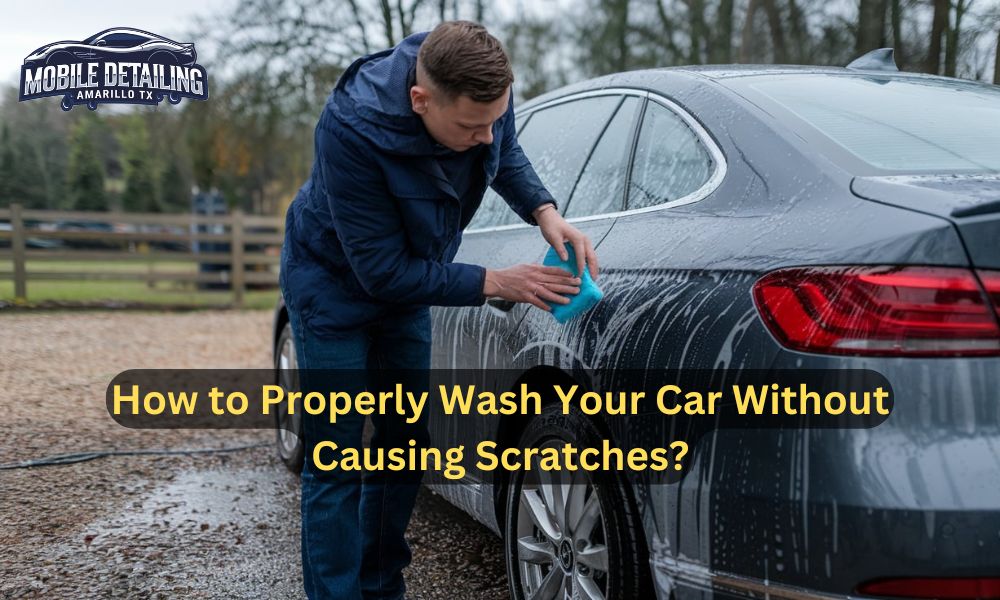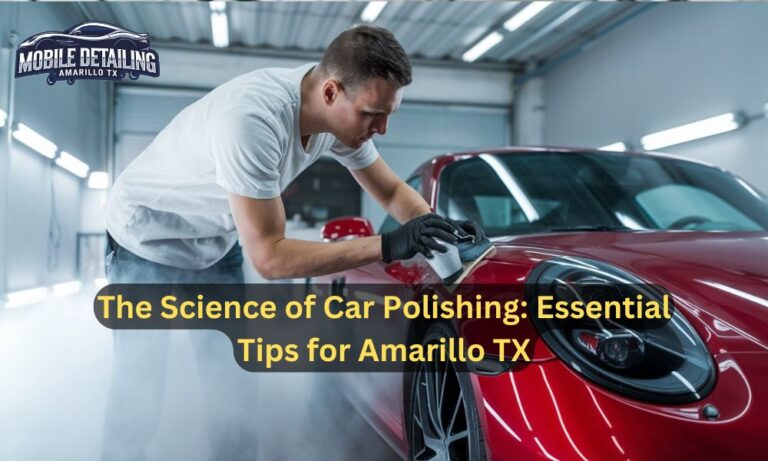Maintaining the appearance of your car is essential, but improper washing techniques can do more harm than good. Many car owners inadvertently scratch their vehicles while washing them, leading to costly repairs and diminishing the overall aesthetics of the car. In Amarillo, TX, where dust, dirt, and pollen can frequently accumulate on vehicles, knowing how to wash your car without causing scratches is critical. By using the right methods and products, you can protect your car’s paint and keep it looking pristine for longer. Here’s a step-by-step guide to help you avoid damage when washing your car.
Why Scratches Happen During Car Washing
Scratches primarily occur due to improper techniques or the use of unsuitable tools. Dust, dirt, and tiny particles of grit can cling to the surface of your car. When you rub a sponge, brush, or towel across the paintwork without proper preparation, these abrasive particles get dragged across the surface, creating fine scratches. Over time, these scratches accumulate, giving your car a dull appearance.
To prevent this from happening, it’s crucial to follow a safe washing routine that minimizes the risk of these micro-scratches.
Preparation is Key: Choosing the Right Tools
Microfiber Towels and Wash Mitts
Using the right tools can make a world of difference. Instead of rough sponges or rags, opt for microfiber towels or wash mitts. Microfiber material is soft, non-abrasive, and excellent at trapping dirt particles without dragging them across the paint. This reduces the chances of scratches forming on the surface of your car.
Two-Bucket Wash Method
The two-bucket method is one of the best techniques for avoiding scratches. Use one bucket for soapy water and the other for rinsing your mitt or towel. The rinse bucket helps to remove dirt and grime from the towel, preventing it from being reintroduced to your car’s surface and potentially causing scratches.
Grit Guards
Another valuable addition to your car washing setup is a grit guard, a plastic insert that sits at the bottom of your wash bucket. Its purpose is to trap dirt and debris at the bottom of the bucket, keeping it away from your mitt as you clean. This simple tool can dramatically reduce the risk of scratching.
The Step-by-Step Process to Wash Your Car Safely
Step 1: Rinse Your Car Thoroughly
Before you even think about applying soap, it’s essential to rinse your car thoroughly with water. Use a garden hose with a gentle spray setting or a pressure washer at a low setting to remove loose dirt and grime. This first step will reduce the amount of abrasive material that could potentially scratch the paint when you start scrubbing.
In Amarillo, TX, dust accumulation is a common issue. Rinsing ensures that you remove as much dust and dirt as possible before proceeding to the next steps.
Step 2: Apply Car Wash Soap
When it comes to car wash soap, avoid household detergents like dish soap. These are too harsh for your car’s paint and can strip away the protective wax or sealant. Instead, invest in a high-quality car wash soap specifically designed for automotive use. These soaps are formulated to clean without damaging the paintwork.
Dilute the soap in water as per the product instructions and use a microfiber wash mitt to apply it to the car’s surface. Work in small sections, starting from the top of the car and moving downward. This method prevents dirt from the lower parts of the vehicle from being dragged onto the cleaner, less soiled areas.
Step 3: Use the Two-Bucket Method
As mentioned earlier, using the two-bucket method is crucial for scratch-free washing. After washing a section of your car, dip the wash mitt in the rinse bucket to remove dirt and grime. Then, dip it into the soapy water and continue washing the next section.
This process ensures that your wash mitt is always clean, reducing the risk of dragging dirt across your car’s paint. It’s a small step that can make a significant difference in preventing scratches.
Step 4: Rinse Again
Once you’ve washed the entire car, it’s time for another rinse. Be sure to thoroughly remove all the soap residue from the car. Soap that dries on the surface can cause water spots, which can later lead to paint imperfections. A thorough rinse also helps to remove any lingering dirt particles that may have been dislodged during the washing process.
Step 5: Drying the Car
Drying your car properly is just as important as washing it correctly. Instead of using a regular towel, which can trap dirt and cause scratches, use a microfiber drying towel. These towels are highly absorbent and gentle on the paint.
Start drying from the top and work your way down, gently patting the surface instead of dragging the towel across it. Avoid air-drying your car, as this can leave water spots, which can etch into the paint if left untreated.
Protecting Your Car’s Paint
Waxing After Washing
After washing and drying your car, consider applying a layer of wax to protect the paint. Wax creates a barrier between your car’s surface and environmental contaminants, reducing the risk of scratches from dust, dirt, and water. In Amarillo, TX, where wind can blow dust and debris onto vehicles, waxing can add a layer of protection that helps preserve the appearance of your car.
Ceramic Coatings
For longer-lasting protection, ceramic coatings offer a more durable shield than traditional wax. Ceramic coatings bond to the surface of the paint and provide a high level of resistance against scratches, dirt, and water. While the application process can be more time-consuming and expensive than waxing, the long-term benefits can be worth the investment for many car owners in Amarillo.
Common Mistakes to Avoid When Washing Your Car
Skipping the Pre-Rinse
Skipping the initial rinse is one of the most common mistakes car owners make. Even if your car doesn’t look dirty, there are likely small particles on the surface that could cause scratches when wiped. Always start with a rinse to avoid dragging these particles across the paint.
Using the Wrong Soap
Using dish soap or other household cleaners is another frequent error. These soaps are not pH-balanced for car paint and can strip away protective layers like wax. Always use a dedicated car wash soap to ensure your car’s finish remains intact.
Using a Dirty Towel
Reusing a dirty towel can transfer grit back onto your car, leading to scratches. Always use clean, microfiber towels, and consider investing in multiple towels for different stages of the washing process (washing, drying, etc.).
Conclusion
Washing your car without causing scratches requires careful preparation, the right tools, and proper techniques. By following a detailed process that includes rinsing, using microfiber wash mitts, employing the two-bucket method, and drying with microfiber towels, you can maintain your car’s paint and keep it looking new for years to come. With these steps, car owners in Amarillo, TX, can protect their vehicles from the harsh elements and reduce the risk of scratches that can detract from their car’s appearance.





